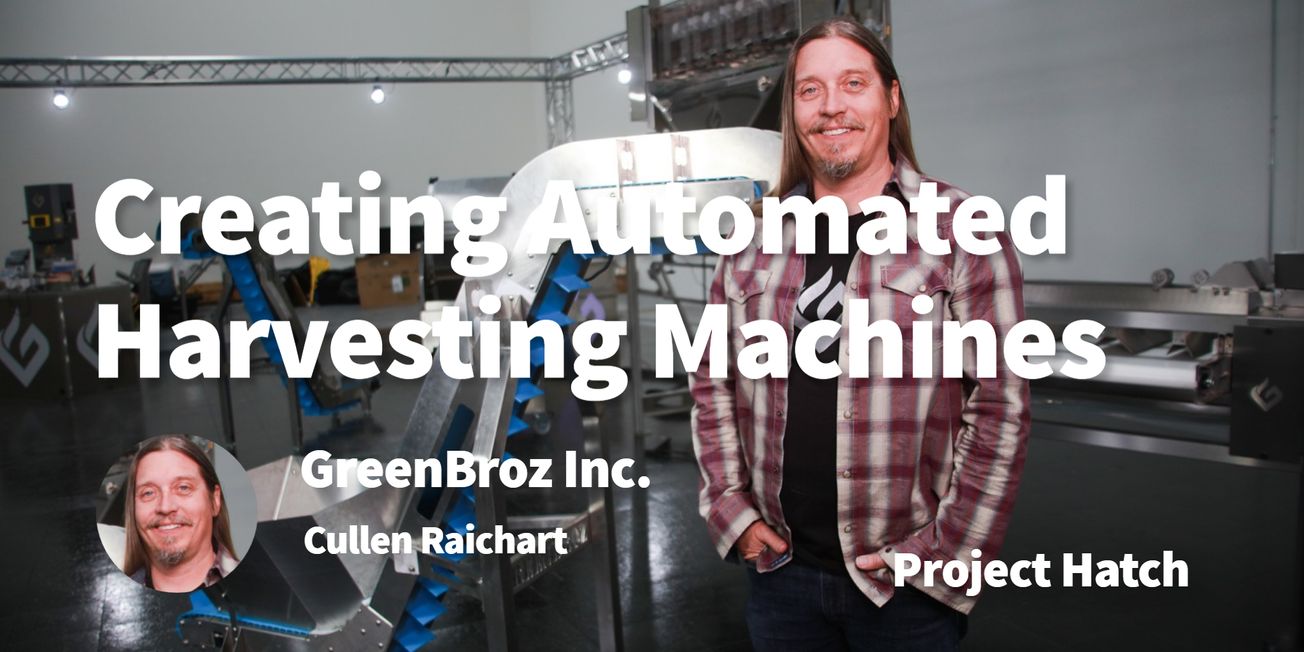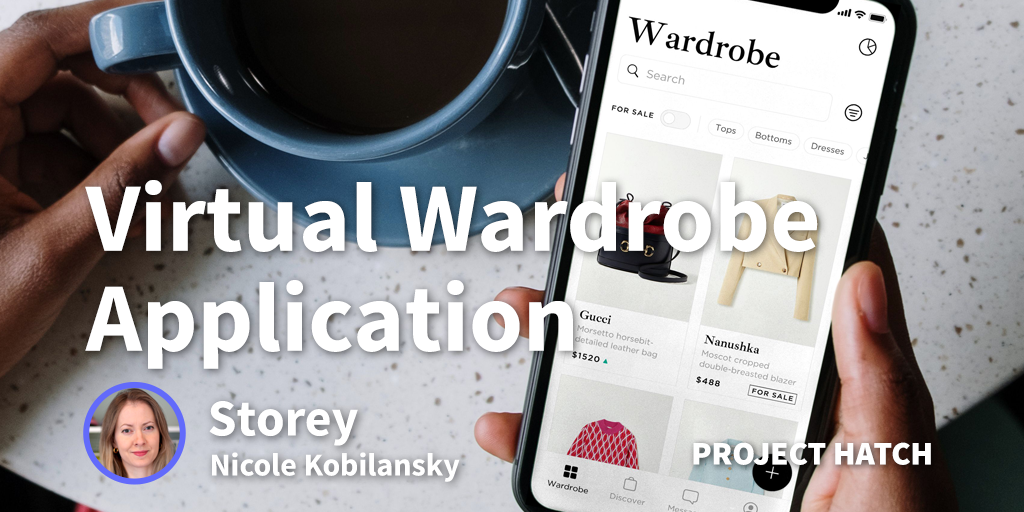The idea really was a bit of a lightbulb moment. I had known for a long time that the economics of hand processing was not going to work going forward as the industry matured. My background in both mechanical engineering and my time spent in the U.S. Navy, informed how I approach the concepts of design, efficiency, and even safety. I was watching a show on cherry harvesting and the wheels started turning. I realized that harvesting automation was key, and also that connecting the various machines needed was also necessary in the future to maximize efficiency, and to be able to compete in the fast-changing global marketplace.
I literally knocked on doors. I drove up to Northern California and walked into a local store selling supplies and equipment to growers and showed the management the first machine I had ever made. I had made two and ended up leaving them there for them to try out. I have always known that it is necessary to test new inventions rigorously, and left feeling a bit on the edge of my seat as to what suggestions they would have for improvements, and really wondering if they would work as well as I had hoped. I had literally only gotten a few hours down the road and I got a call saying they wanted 8 more. I remember instantly recovering from my exhaustion at the time, and getting this amazing boost. This was it! This was the moment when I knew I had the beginnings of my business.
Just by having more and more producers try out the machines, and getting overwhelmingly positive feedback. The process of having many different cultivators try out the machines and realizing that they provided solutions for small, medium, and large-scale operations, just in different ways was a turning point. The smaller operations might just use one machine for a specific purpose, but larger operations would need multiple different machines and sometimes more than one of each, operating side by side to deal with larger volume.
Did you have any experience/expertise in the area?
I grew a bit when I was younger and had some experience hand trimming, so I understand what an incredibly time consuming process it can be and also how important quality of the end product is. I also knew quite a few people who were growing on a larger scale and would hear all their complaints about the lack of efficient harvesting solutions.
Who is your target demographic?
Males between the ages of 20 and 55 are our biggest buyer group currently. We do also sell to people outside that age range, and more and more women are becoming leaders in the space. There are actually more women executives in the cannabis sector than any other, so I see us doing business with more and more women-run companies as the industry grows.
Most of our sales are driven by Instagram and AdRoll.
What is the funniest/most strange customer request you’ve had?
I would say the request for an iphone charger on the machines. The way we do things now, I guess it’s convenient to have an iphone charger anywhere and everywhere. Ultimately, in terms of design we have to go with the kinds of requests that are of real intrinsic value to the industry as a whole. These types of features are usually more focused on efficiency, quality, and cleanability of the individual parts of our machines.
How did you fund the idea initially?
We won the inaugural Marijuana Business Pitch Slam in 2014, and got some seed funding from the Arcview Group. Other than that, we have been bootstrapping our way to the top.
Do you have any tips for finding your first employee’s?
Don’t hire just friends and acquaintances. This can get messy very quickly and relationships can be forever changed if it does not go as expected. Identifying very specifically the skill sets you are looking for that will help you grow in the early stages is important. Setting up a structure when first starting out that includes the base you need to hire for immediately, and then the subsequent tiers as you grow is key. Also, vibe is very important. You want people who play well off each other and create a positive workplace culture. You spend all day every day there, and
when you are first starting out sometimes well into the evening as well. You may as well surround yourself with people you enjoy spending time with, because you are going to be in the weeds together, literally. No pun intended!
Did you run any companies prior GreenBroz Inc.?
No. This is my first experience running a company. I worked as a Chief Engineer at Hewlett Packard and have worked for several other Fortune 500 companies. I served in the U.S. Navy for 5 years during the Gulf War. I have taken a lot of the lessons I learned in the military with regard to problem solving and creating systems and applied it to my business. Working at Hewlett Packard and my time in the military both imparted the importance of efficiency and safety, which are both super important when you are running a production facility.
When I started the company, there was a bit of a mixed reaction from my family and friends. Some of my friends and family were excited about it, others would listen to me talk about my ideas, but I could tell they were not that interested. I was dogged in my pursuit of it. I just wouldn’t let it go. Now that I think back on how it all started, I probably went on about it nonstop. I was consumed by it. I think you pretty much have to be in order to get a business like this off the ground.
What motivates you when things go wrong? What is the end goal?
My belief that hard work and forging ahead will always lead to a solution propels me forward. It may be painful, but if you stick to it and don’t give up the solution will always be within reach. I’m a big believer in creating your own luck. You do it by showing up every day and going all in. Things that go wrong are opportunities to learn. This is key. You can’t ever let something that goes wrong be an end point. I try and look at it as a starting point to finding a creative solution. You have to ask yourself the important questions. Did I set myself up for this? How can I get beyond it? What do I need to do to survive it? When the crisis has passed you need to look back on the situation as a whole and really understand how you got into the problem so you can avoid it in the future.
Do you have any advice for someone just starting out?
There are a lot of traps and potential pitfalls for first-time entrepreneurs. You don’t need to start a big company to start a business. You just need to start. You don’t need a board of directors. You don’t need a bunch of advisors. I’m not saying you won’t need some advice from trusted sources. You will. But, all these things can overcomplicate things and weigh you down. Be patient when bringing people in. Think carefully about your needs. Don’t give away anything early on. It takes a while when building a business to understand who you need on your team in the long-term. Most likely no one that you think might be worth shares or part ownership early on will end up being that person later on down the line.
A lot of people make the mistake of giving away 10-20% because they thought they had to in order to grow in the beginning, but then later on they realize they now need actual money or more high level support and they have 10-20% less to work with. There’s no value to you in giving away something that doesn’t have value and then once you make it valuable, you’ve given away more than it was really worth for the return. I would say to entrepreneurs just starting out don’t fall into the trap that you need to give equity to people to get started. Figure it out as you go and see who’s got value, real value.
What is stopping you being 3x the size you are now?
Nothing is stopping us now. We are on track for that kind of growth. We are right on the precipice of it right now. We just opened our new production facility in Las Vegas, Nevada and are opening our new showroom later this year. The thing that has been stopping us from that kind of growth was having a facility at that scale to deal with demand. We have that now, so it’s just a matter of forging ahead.
How do you protect yourself from competition?
We just do better. Competition is always going to be there. Competition is good. It drives innovation forward, and that’s what we all want. We just do the best job possible, take care of our customers, and don’t speak negatively about our competitors. Of course, we also keep our new innovations private until we secure a patent and are ready to make them public. I don’t spend too much time thinking about the competition. I focus my energy and the energy of my team on problem solving and on pushing the technology forward. We provide solutions, plain and simple. I think if you are the company that identifies the main problems your clients are facing, and you solve those problems you can’t lose.
We own 4 patents and are working on several more, but I can’t say what those are yet.
What are the top 3-5 apps your business could not run without?
Solid Works, HubSpot, Microsoft Outlook, Adobe Full Creative Suite. They allow us to automate some of our internal processes, which leads to increased productivity and efficiency.
What are your favorite books and podcasts?
Books:The E. Myth and 2 Second Lean.
I love listening to a variety of TED Talks. They are always engaging no matter what the topic. I find that even if the topic is completely unrelated to what I do, I always come away with something useful. Root’d Podcast, which we sponsor is also great. Tim Strombel, the host is a really talented interviewer and the topics are always timely. A few other industry-specific podcasts I like are Blunt Business, GrowCast, and Budding Industry.
What are the next products you’re working on?
We are currently working on 6 new, groundbreaking, industry-born machines that will address harvesting bottlenecks and solve problems for producers. Due to the stiff competition, we are keeping the specifics close to the vest. We are nearing completion on our end-to-end system, which will give the cannabis and hemp industries the equivalent of what’s available today in the traditional agricultural sector. This will be a big accomplishment and a first for the industry.
We will be releasing our updated Model M and Sorter later this year with touchscreens. This technology includes a small computer which will allow clients to store data for future runs, and gather data on trim time, weight in, weight out, and a number of other metrics. This will allow producers to make data driven decisions in real time, increasing efficiency and helping to keep costs down.
Where do you see the company in 5 years?
In 5 years, I think we will be globally established, and I think we will come out as the clear market leader. Taking our current pattern of growth into account, we should be in the 25-35 million dollar revenue range. I think this is the direction we are headed in pretty clearly. I think we should be valued, and we should be an upper tier company within that time frame. We were at $12 million in 2019.
Everything has a price. I love what I am doing now, but I can’t do it forever. I’m not in a hurry, but I could see selling in the future.
| Company Name: | GreenBroz, Inc. |
|---|---|
| Founder: | Cullen Raichart |






